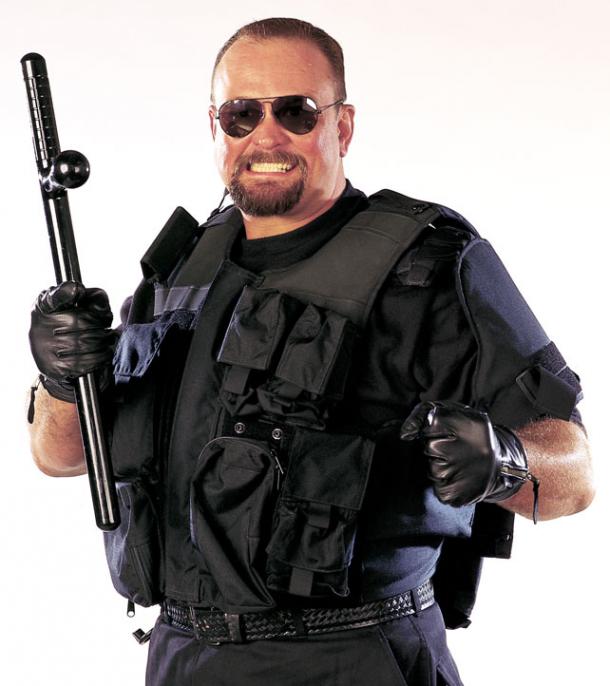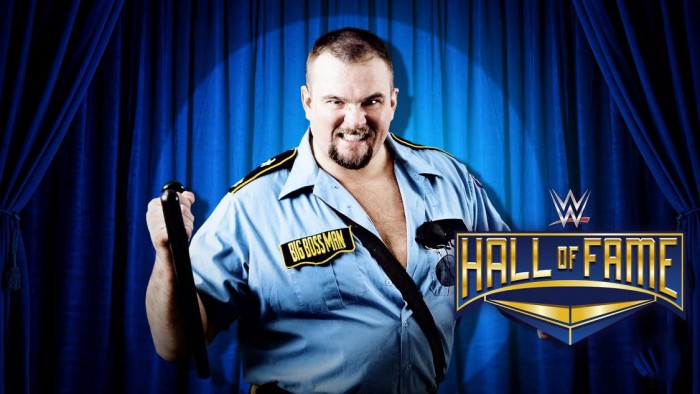There was nothing that made Ray Traylor someone that people would have picked out as a great wrestler. He was large and had the physique of your local plumber or mover. He was a plain and simple country boy from Cobb County, Georgia. Nothing outside of the ring pointed to the greatness that Traylor had.
The Big Boss Man
As the Big Boss Man, Traylor was a hard-nosed officer with a penchant for justice and a personality that could draw boos or cheers, depending on what character he needed to play. He had a charisma in the ring that set him apart, a charisma that quickly caught the eyes of the WWF in the 80's, and a charisma that would make him a fan favorite and eventual Hall of Famer.
The Big Boss Man was introduced in 1988, but it was his attack of Hulk Hogan that moved him to the top of the wrestling card. As the bad guy he was able to get the crowd to cheer on Hogan while raining boos on himself. He was the 300 pound workhorse that made up the pure wrestling aspect of the matches work.
His ability to draw ire from the crowd was capitalized on by the WWE when he teamed up with Akeem the African Dream as part of the Twin Towers to take on the true stars of the WWF at that time, The Mega Powers, Hulk Hogan and Randy Savage. Traylor was so talented in ring and on mic that he was included in matches with some of the highest profile wrestlers of that era. The most impressive part was that, despite his size, he could keep up with and even push other wrestlers athletically in the ring. Boss Man was a far cry from King Kong Bundy and other immobile giants that had tried to take down the good guys before.
Boss Man continued his evil cop persona until the crowd began to cheer for him simply because of how good he was both in the ring and on mic. In the current "Reality Era" fans will cheer for bad guys and boo the good guys simply because they like how they wrestle. In the late 80s and early 90s crowds cheered the favorites and booed the bad guys. He was such a presence that the crowd couldn't help but cheer him.
Departure and Return to WWF
It would be this justice and truth seeking lawman that Traylor would portray until his departure from the WWF in 1993. He continued to wrestle and was a workhorse in WCW until he rejoined WWF, this time as a SWAT-styled bodyguard to protect the McMahons. In his return, the Big Boss Man feuded with many "Attitude Era" stars like Stone Cold, the Rock, and the Undertaker. Through it all, Boss Man was still able to keep up with the younger and more athletic wrestlers who had debuted in his absence.

Because his was not at the top of the card, Boss Man was given some of the worst the "Attitude Era" had to offer. From funeral crashing and cooking dogs to being hung from the Hell in a Cell, Boss Man was a company man through and through and would give his all to the things he was given. He was released from the WWE in 2003. RayTraylor, the Big Boss Man, died of a heart attack in 2004 at his home.
Well Deserved Award
Traylor was always a company man. He gave all he had to whatever he was doing and it was his defining characteristic. Everything he had went into that ring, that promo, or that training. He was an incredible big man, but more important than that, he was an incredible wrestler. He was a mobile big man before that was even an occurrence. He was not the lumbering giant of the time who couldn't make it around the ring.
He was the working man in the WWE while he was there. The plumber, the electrician, the blue collar man doing his work without expecting to be rewarded or noticed. That was the charm of the Big Boss Man. He was there to put in an honest day's work despite whatever was going on around him. He was part of the WWE's backbone in two different eras and played a large role in both. He worked under the radar without an expectation of honor, which proves that he more than deserves induction into the 2016 WWE Hall of Fame.









































